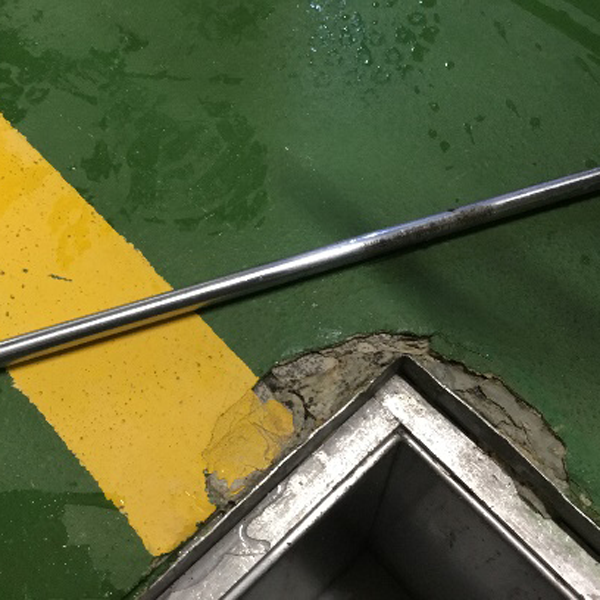L-profile edge case study: CIP station
The issue
In a short time a large amount of hot water is drained from the tank to the floor or directly to a drain. The stainless steel drainage absorbs heat faster than the underlying concrete and this creates thermal stress. Channel expands and its visible edge lifts. Due to these displacements, micro-cracks occur directly in the connection between the screed floor and the channel edge. Subsequently, small micro-cracks connect and cracks form around the channel or gully (cracks are approximately 1mm in width or larger). Over time the floor begins to break up around the drainage and cracks will spread across the floor.
- Volume of water: e.g. 5000l per cleaning cycle
- Temperature of water: + 80°C
- Personnel: approx. 1
- CIP equipment: CIP tanks
- Flooring: resinous floor
- Drainage: high capacity linear channels + high capacity point drainage
Secondary consequences
- Cracks around drainage enable water to penetrate the floor construction. As a result, water can migrate under the screed layer to the lowest point of the concrete structure and cause delamination (peeling and bursting) which creates additional damage to the floor.
- Erosion of the floor structure enables water to penetrate the floor construction
The solution
Use of a flexible joint with L-profile. The flexible joint absorbs the stress between the floor and drainage systems, allowing expansion. The channel does not press on the floor structure. The L-profile provides protection against dynamic stress caused by handling equipment.
